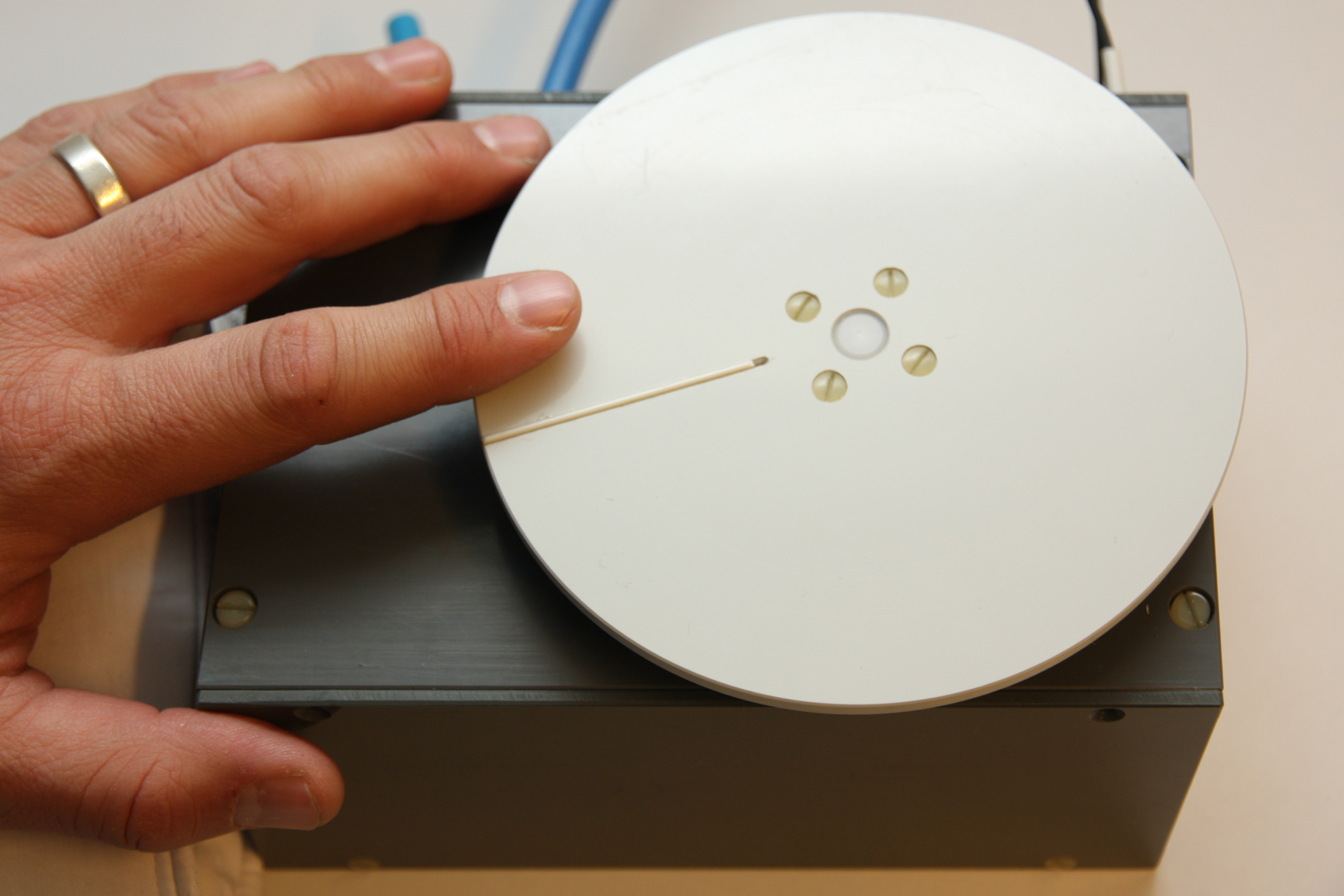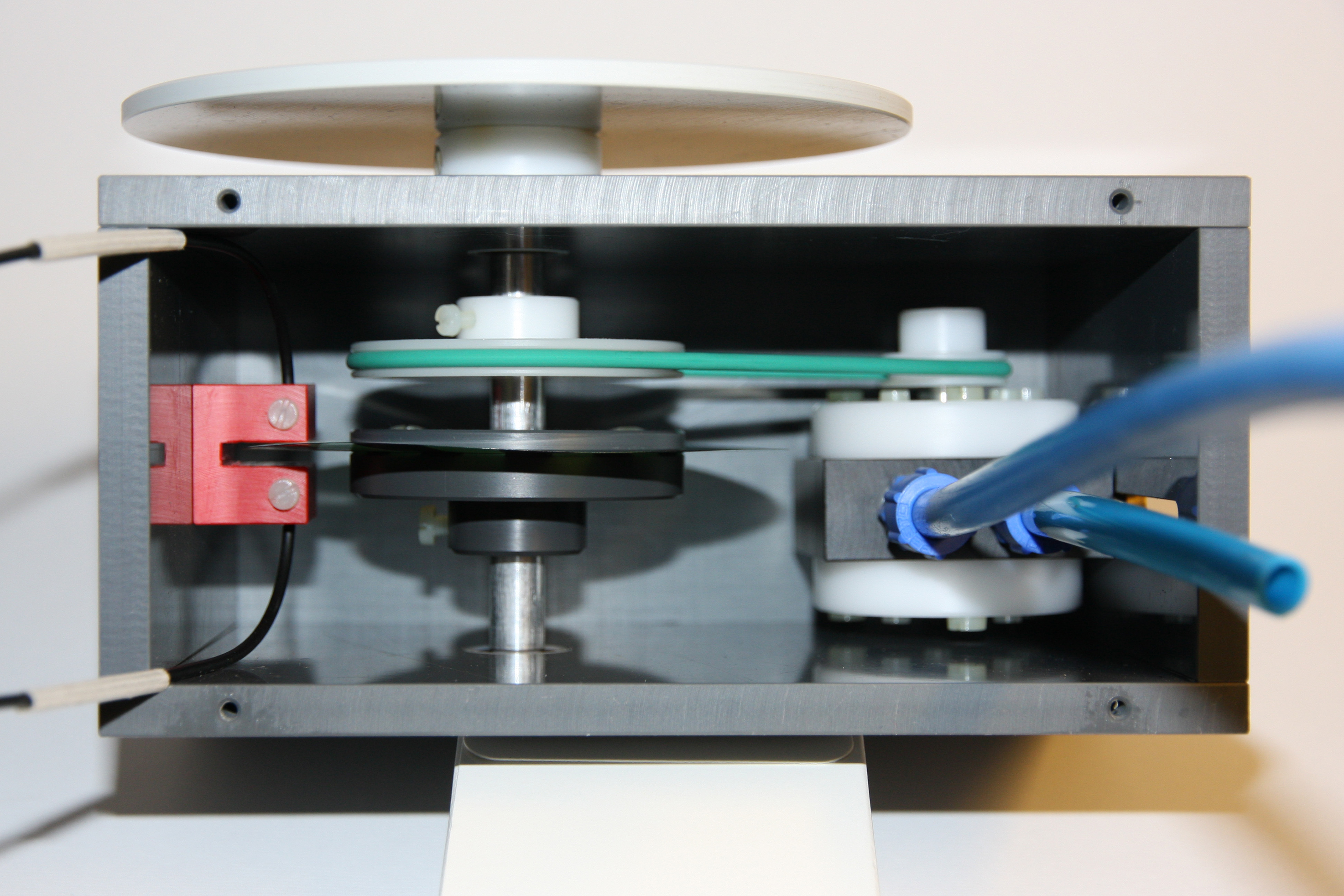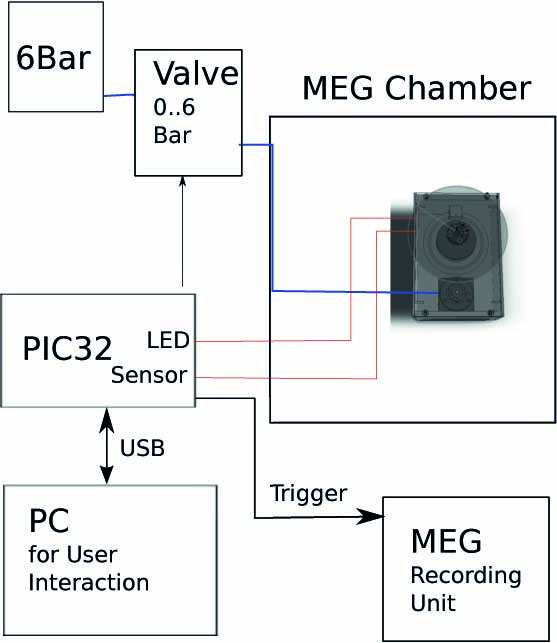
The Rotating Disk Stimulator
Philip J Broser, Veronika Moor, and Christoph Braun. A non-magnetic
rotating disk stimulator for the study of neuromagnetic correlates of sensorimotor
interaction. IEEE Transactions on Neural Systems and Rehabilitation
Engineering, 23(6):1078-1084, 2015 (3.410)
The fine graded usage of the hand is a remarkable skill of humans. Even other primates are not able to use their hands in a similar skilled fashion. The ability to use the fingers with high precision is thought to require close interaction between the motor and the sensory systems. In humans, unlike in other mammals, the layer V pyramidal cells of the primary motor cortex controlling hand muscles project monosynapticly onto the spinal motor neurons. However, it is still not fully understood, how sensory feedback modulates motor commands in demanding sensory-motor tasks. This is due to the fact, that there is no approach for investigating the sensory-motor cortical interaction in sufficient detail. The fast and precise communication between the sensory and motor systems which is reflected in the close topographic proximity of both cortical regions requires measurements of cortical activity with high temporal and spatial resolution. Magnetoencephalography (MEG) is capable of both, and is therefore the method of choice to validate or falsify network models. However, to take advantage of MEG an experimental paradigm capable of simultaneously recording functional responses and calculating response latencies in both cortices is necessary. Such a sensory-motor paradigm does not currently exist. In our previous studies, we showed that robust sensory responses can be generated by repetitive tactile stimulation. Further, robust responses of the motor cortex can be generated by active periodical increase and decrease of muscle tone. Utilizing both of these observations we have designed an MEG-compatible prototype of a stimulator. The stimulator consists of a rotating disk with an elevation on the otherwise flat surface such that subjects sense with his/her finger the speed of the disk. With the force applied by the finger onto the disk, the subject can control its speed. During the experiment the subject is asked to keep the speed of the disk constant while the driving torque of the motor is systematically manipulated. In a pilot study, we could show that a detailed analysis of the sensory motor network is principally possible when using this prototype in an MEG recording. In contrast to existing paradigms this setup allows separate time-locked analysis of the sensory and motor component independently and therefore the calculation of latency parameters for both systems. Combining these results with diffusion MR imaging, which allows reconstruction of the white matter fibres, results in a functional and structural characterisation of the sensory-motor network.
Principle Set Up:

Internal Components:

System:

Video of the rotating disk stimulator in action:
Poster (DGKN 2014):